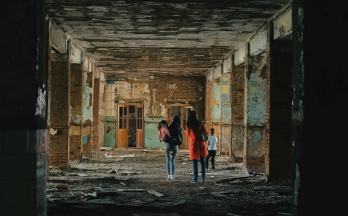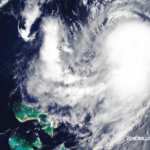
Vadim Zakharishchev / shutterstock.com
CHICAGO—“You never know when things might happen,” began Kamala M. Nola PharmD, MS, vice chair and professor in the Department of Pharmacy Practice at Lipscomb College of Pharmacy, Nashville, at the 2018 ACR/ARHP Annual Meeting.
Dr. Nola explained that on May 1, 2010, the Arthritis Foundation Arthritis Walk held on her university’s campus was moved indoors because of rain. The rain continued, and continued. Nashville’s interstates flooded, hundreds of homes were destroyed and lives were lost. Debris was spread for miles, and the city was filled with the smell of mold and sludge. Nashville experienced a disaster unlike any the city had ever seen.
Although always catastrophic, natural disasters may, like in Nashville, creep into a geographic area, or they may occur in an instant as in a tsunami, earthquake or tornado. And of course, disasters may be man-made or result from a disease outbreak as well.
Many organizations step up during disasters: emergency responders, the military, public health agencies, community organizations and healthcare systems (professional and nonprofits). Community organizations play an important role in disasters when the government is overtaxed.
The Government
The federal healthcare system coordinates the medical disaster response through the National Disaster Medical System, which includes the Departments of Health and Human Services, Homeland Security, Defense and Veterans Affairs. Their health professionals are activated during times of potential and actual catastrophic events. Recently, the system has been working at capacity to meet the needs of survivors of a steady stream of disasters.
The U.S. also maintains a strategic national stockpile of medical supplies and medications for use during disasters. Historically the stockpile has been administered by the Centers for Disease Control and Prevention (CDC), but it is now maintained under the Office of the Assistant Secretary for Preparedness and Response. Most states also have one or two pharmacists assigned to the important task of helping coordinate the national stockpile supply within a state to ensure it is ready to be deployed at a moment’s notice.
Healthcare Providers & Policy
Many healthcare providers regularly perform health outreach, and this experience can serve as practice for disaster response. For example, a group of students from Lipscomb University College of Pharmacy coordinated with Vanderbilt University to immunize approximately 14,000 individuals in a single event. Such activities provide an opportunity to practice what a response might look like during a major catastrophic event. These activities reveal the process as well as the various roles and responsibilities.
Healthcare providers not only serve during a natural disaster, they can help address many problems that appear in the aftermath of the disaster as well, such as caring for evacuees. Evacuees often have no accessible medical or medication history. Because many states recognize the difficulties patients face in obtaining medications during times of disaster, governors often suspend Board of Pharmacy rules so pharmacists can fill medication requests with very little information. State lawmakers are also increasingly passing legislation to address the issue in advance of a disaster. The laws detail how much medication to give a patient and direct who should pay for the medication.
Dr. Nola concluded that disasters should be addressed with policies at the federal, state, local and practice level. These policies should reflect the shifting needs of the population, and should focus on those at greatest risk. With medical practices, policies should consider business needs, patient needs and personal needs.
Evacuees often have no medical or medication history.
Military Medicine
Angelique Nicole Collamer, MD, a rheumatologist at Walter Reed National Military Medical Center, Bethesda, Md., took the stage to describe the military experience with medical care during times of disaster. She explained that the Uniformed Services University of the Health Sciences (also in Bethesda) is the nation’s medical school. Its goal is to teach physicians how to practice good medicine in bad places with a recognition that the lessons hard-learned in war can apply to disaster response.
She began by noting that gastroenteritis is commonly seen during disasters. Dysentery, and particularly infectious gastroenteritis, has always plagued military operations and is a problem in both war and natural disaster situations. Rheumatic disease has also been documented in the military, with the first incidences reported in the historical medical records of Federal Civil War troops, which reveal that more than 12,000 soldiers were discharged because of chronic rheumatism, many with lumbago, which was probably spondyloarthropathy.1
Some studies have examined whether rheumatological diseases in general are more common in the military. It appears they are not. The Millennium Cohort Study, for example, was a prospective study of systemic lupus erythematosus (SLE) and rheumatoid arthritis (RA) in troops deployed in Iraq and Afghanistan.2 The study found that overall, deployment was not associated with an increased risk of newly reported SLE or RA. This finding is confirmed by the military’s robust electronic medical records, which indicate its members are not at increased risk for rheumatological disease. Although it may be that the military has a healthier worker cohort than the general population, the findings suggest any toxin exposures in the military are not associated with an increased risk of RA or SLE.
Dr. Collamer concluded that although healthcare providers often imagine a disaster will produce patients requiring treatment for trauma, their skills will actually be most needed to provide routine medical care following the disaster. Rheumatologists have the skillset necessary to meet these needs during humanitarian disasters and in wartime. In certain circumstances, they may also be called upon to perform telehealth for patients in need of rheumatologic care.
Lara C. Pullen, PhD, is a medical writer based in the Chicago area.
References
- Bollet AJ. Rheumatic diseases among Civil War troops. Arthritis Rheum. 1991 Sep;34(9):1197–1203.
- Jones KA, Granado NS, Smith B, et al. A prospective study of lupus and rheumatoid arthritis in relation to deployment in support of Iraq and Afghanistan: The millennium cohort study. Autoimmune Dis. Epub 2011 Nov 14.
